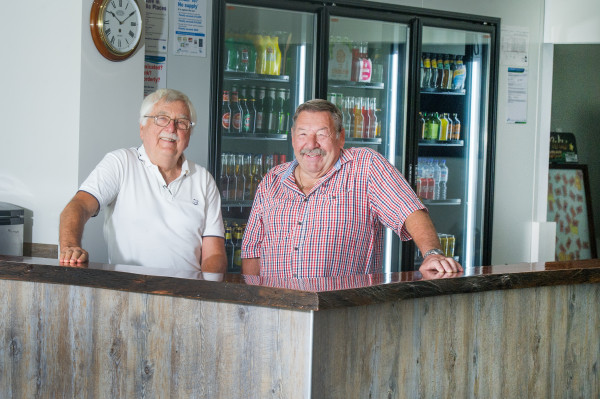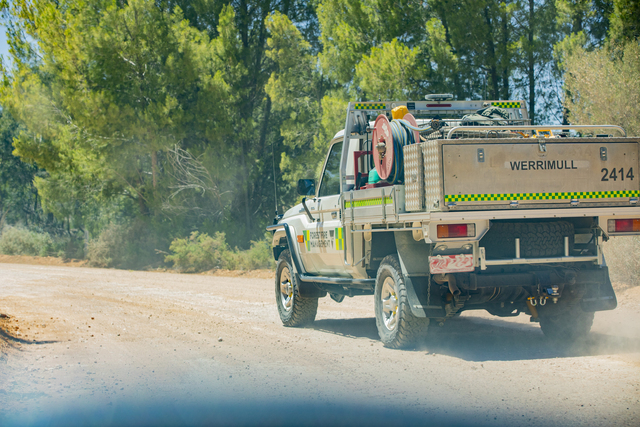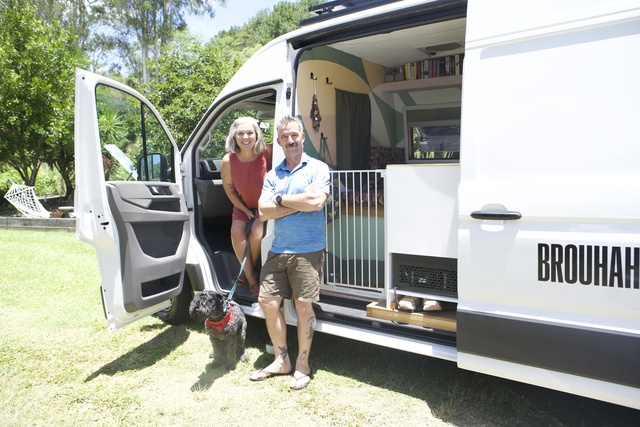Two months after the opening of their $180,000 new clubrooms, the Mildura Workers Bowls Club is flourishing. In 2005 the club was struggling, having lost its own facility on the corner of 10th and Deakin. Club president Barry Ryland and secretary Ron Boyd discuss the club’s future and just how far they’ve come with Angus Dearlove.
Pictures: Louise Barker
FOR the Mildura Workers Bowls Club, all signs point to the future.
Fourteen years on from the club losing its clubhouse and greens on Deakin Avenue, their fully member-funded $180,000 new clubhouse is the envy of the district and things are looking up for the Workers.
In its heyday the club was stationed at the corner of Deakin Avenue and 10th Street.
But the land they were on was sold off and the club forced to relocate.
“The greens were where Centrelink and Medicare are now,” club secretary Ron Boyd says.
“They’d just spent $35,000 on upgrading the clubhouse.”
The club didn’t have to go far, joining the Mildura Bowls Club at Cureton Avenue — occupying what was the ladies side of the existing building.
This move was welcomed despite the discontent from older members of both clubs.
“It was probably good for Mildura because it was costing them a lot of money for the four greens, and the stories were they were struggling to look after the four greens on their own,” Boyd says.
So it’s been a win-win.
“And we’ve still got a good rapport with the Mildura Working Man’s Club — they still provide us with financial assistance through their grant programs each year.”
Over the years the discontent between Mildura and the Workers has died down with the clubs now operating alongside each other in harmony.
“We have a pretty good relationship,” Boyd says.
But while they had a permanent home the Workers’ new clubrooms still needed a bit of a refresh, with members banding together to work towards the clubhouse there today.
If members couldn’t attend working bees they made donations and lo and behold the fruits of their labour are there for all to see and be proud of.
“It took roughly two and half years to get to this point,” club president Barry Ryland says.
“The culture has changed dramatically, even with our members.
“They now feel identified with the club — it’s their own.”
The club is now pushing their clubrooms as a Friday night social venue, once a month having a Friday night meal.
“It’s attracting people because they now have the environment to feel comfortable in,” Ryland says.
Now the focus turns on increasing membership, and more initiatives such
night bowling to make use of the lights at the club.
Ryland says the club also wanted their rooms to be used as a function centre as an extra source of income.
“As a club we can’t just survive on membership only,” he says.
Another initiative is free membership for women as the club looks to bolster its ranks.
“We’d like a big membership of females,” Ryland says.
“We are now offering free membership to women — whether they can bowl or wish to learn how to bowl.”








